 Milk Thistle research verifies Milk Thistle’s liver protecting compounds, commonly referred to as silymarin.
Milk Thistle research verifies Milk Thistle’s liver protecting compounds, commonly referred to as silymarin.
The medical word for liver protecting compounds is antihepatotoxic. That is, anti/against, hepato/liver toxic.
Silymarin consists of a large number of flavonolignans, including silybin, isosilybin, dehydrosilybin, silydianin and silychristin. Silymarin and these flavonoligans exert a liver protective effect against a variety of toxins, including the phallo toxins of the Amanita phalloides mushroom. (I think of flavonolignans as Football Hooligans who not only enthusiastically cheer, but militantly defend. It helps me remember the unfamiliar medical term.)
Amanita phalloides, commonly called Death Cap, is one of the world’s most poisonous mushrooms, containing toxins that are particularly destructive to the liver. Eating this mushroom can lead to severe liver damage and death if untreated.
In animal experiments, when silymarin was given before poisoning by the Amanita phalloides mushroom, it was found to be 100 percent effective in preventing liver damage.
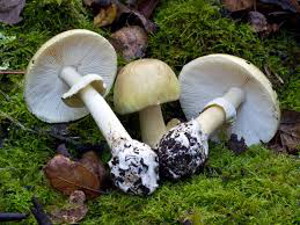
Silymarin was also found to be completely effective if given to animals within ten minutes of exposure to the poison. When given within twenty-four hours it still prevented death and greatly reduced the amount of liver damage.
Silymarin also protects against liver damage from dangerous solvents such as carbon tetrachloride and ethanol (alcohol).
Silymarin has been used in treating hepatic disorders in humans. A German medical study found that liver function in patients with chronic hepatitis improved after three months of therapy with silymarin.
A later study reported on the use of 420 milligrams of silymarin daily in patients with cirrhosis of the liver. Of twenty people followed for six to thirty-six months, ten were definitely improved and four had deteriorated.
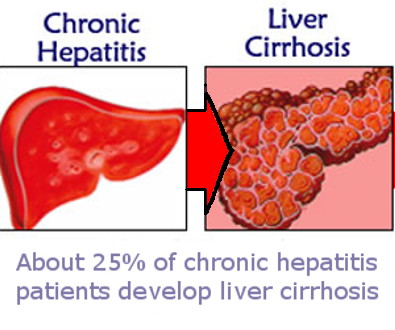
Chronic Hepatitis leading to Liver Cirrhosis
German Commission E, Germany’s equivalent of the FDA in the U.S., has recommended Milk Thistle use for liver conditions, including toxin-induced liver damage and hepatic cirrhosis, also as a supportive therapy for chronic inflammatory liver conditions.
Results of numerous studies suggest silymarin not only protects liver cells by preventing actions of toxic substances but also stimulates protein synthesis to accelerate production and regeneration of liver cells.
Silymarin, and its component silybin, act as antioxidants, protecting cell membranes from free-radical-mediated oxidative damage, known as lipid peroxidation. Most liver toxins produce their damaging effects by free radical mechanisms.
Both silymarin and silybin protect red blood cell membranes against lipid peroxidation and hemolysis (breaking down of the red blood cells) caused by certain red blood cell poisons.
Significant Research
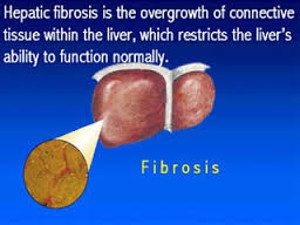
Fibrosis of the Liver
Effects of silymarin on the resolution of liver fibrosis – Published April, 2008, Journal of Viral Hepatitis – Results showed restoration from liver fibrosis in the therapeutic group was significantly increased as compared to that in the model group.
Protective effect of silibinin against isoproterenol – induced injury to cardiac myocytes and its mechanism Published March, 2007, in China – Silibinin protects cardiac myocytes against isoproterenol-induced injury through resuming mitochondrial function and regulating the expression of SIRT1 and Bcl-2 family members.
Use of Silybum marianum fruit extract in broiler chicken nutrition: influence on performance and meat quality. Published June, 2007, Journal of Animal Physiology and Animal Nutrition – Treatments reduced lipid content of both breast and thigh and increased muscles resistance to oxidative stress.
Clinical applications of Silybum marianum in oncology. Published June, 2007, Integrative Cancer Therapies – Milk thistle is increasingly used in oncology research and treatment for cleansing and detoxification after chemotherapy and preventing hepatotoxicity during chemotherapy.
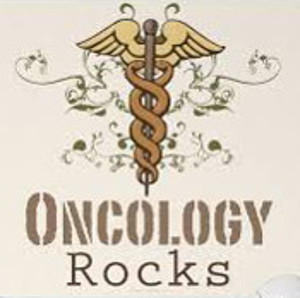
Caduceus – Symbol of Medicine
Milk thistle may also have applications in ameliorating long-term hepatic and cardiovascular effects of cancer treatment.
Advances in the use of milk thistle (Silybum marianum). Published June, 2007, Integrative Cancer Therapies – Silymarin, a mixture of flavanoid complexes, is the active component that protects liver and kidney cells from toxic effects of drugs, including chemotherapy. Although milk thistle has not significantly altered the course of chronic liver disease, it has reduced liver enzyme levels and demonstrated anti-inflammatory and T cell-modulating effects.
Breast Cancer – Published June 2009, Molecular Cancer Therapeutics, Canadian researchers determined that silibinin exhibited anti-proliferative activity and identified a molecular mechanism involved in blocking cancerous cell proliferation.
Cervical Cancer – Published April 2012, Cell Biochemistry and Function, Chinese researchers found a dose-dependent relationship between cervical cancer cell death and silibinin, prompting consideration of silibinin as a preventative and intervention strategy for cervical cancer.
Colon cancer – Published November 2003, journal Oncogene –Colorado researchers confirmed that silibinin helped regulate the cell cycle and interfered with colon cancer cell proliferation.
Flavonoid, silibinin, inhibits proliferation and promotes cell-cycle arrest of human colon cancer. Published November, 2007, Journal of Surgical Research – CONCLUSION: Silibinin significantly inhibits proliferation.
 Silybin and silymarin – applications in medicine. Published 2007, Current Medicinal Chemistry – Silybin and silymarin from milk thistle shown to have interesting activities, e.g. anticancer, canceroprotective and hypocholesterolemic. These effects were demonstrated in a large variety of illnesses of different organs, e.g. prostate, lungs, CNS, kidneys, pancreas and skin.
Silybin and silymarin – applications in medicine. Published 2007, Current Medicinal Chemistry – Silybin and silymarin from milk thistle shown to have interesting activities, e.g. anticancer, canceroprotective and hypocholesterolemic. These effects were demonstrated in a large variety of illnesses of different organs, e.g. prostate, lungs, CNS, kidneys, pancreas and skin.
Liver Cancer – Published October 2007, World Journal of Gastroenterology, California researchers investigated effects and mechanisms of silibinin on growth of the most common type of liver cancer. Researchers found that silibinin exhibited potent anti-cancer effects In various liver cancer cell lines.
Lung Cancer – Published 2006, J Dent Res, Silibinin treatment significantly decreases the tumor mass, tumor volume as well as lung metastases.
Published 2004, Mol Carcinog, Silibinin inhibits invasion of human lung cancer cells via decreased productions of urokinase-plasminogen activator and matrix metalloproteinase.
Lymphoblastic Leukemia – Published January 2010 in the journal Cancer – New York researchers investigated use of milk thistle for children with lymphoblastic leukemia with chemotherapy-related hepatotoxicity. They found that milk thistle supported a decrease in the harmful effects of chemotherapy on the liver without working against the cancer treatment. The children taking milk thistle needed fewer chemotherapy dose reductions because of side effects than the children who did not take milk thistle.
Pancreatic Cancer – Published August 2011, International Journal of Molecular Sciences, Chinese researchers found that silibinin effectively inhibited several pancreatic cancer cell lines.
Prostate Cancer – Published 2012, PLoS One, University of Colorado Cancer Center research found Milk thistle hits prostate cancer two ways: by killing cancer cells directly and by restricting the ability of tumors to grow the new blood vessels they need.
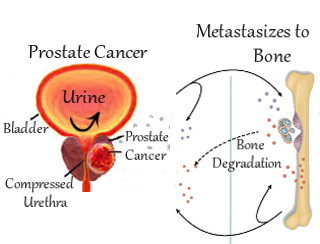
Published 2004, J Cell Biochem, “Dynamic process of prostate cancer metastasis to bone” – Prostate cancer cells have high propensity to metastasize to bones. During bone metastasis, prostate cancer cells express genes like osteocalcin, bone sialoprotein, osteopontin, RANK ligand (RANKL), whose expression is normally restricted to bone cells. This phenomenon is termed as ‘osteomimicry’ and is considered as an extreme effort by prostate cancer cells to adapt to their microenvironment. Data has shown that silibinin could target many osteomimicry related proteins. Once settled in bones, prostate cancer cells alter the delicate balance of bone remodeling orchestrated by two types of bone cells namely osetoclasts (involved in bone degradation) and osteoblasts (involved in bone formation).
Note – After a friend’s brother was diagnosed with stage 4 prostate cancer, a year after his test for prostate cancer came back clean, another friend said their doctor told them that tests taken after a prostate exam often show no cancer.
Anti-metastatic Efficacy of Silibinin: Molecular Mechanisms and Therapeutic Potential against Cancer ~ Excellent research source with 201 references ~ Read now.

Phyto-Female Complex for the relief of hot flushes, night sweats and quality of sleep: randomized, controlled, double-blind pilot study. Published February, 2007, Gynecological Endocrinology –
OBJECTIVE: To determine the efficacy and safety of the herbal formula Phyto-Female Complex (ingredients: standardized extracts of black cohosh, dong quai, milk thistle, red clover, American ginseng, chaste-tree berry) for the relief of menopausal symptoms.
RESULTS: The women receiving Phyto-Female Complex reported a significantly superior mean reduction in menopausal symptoms than the placebo group. The effect of treatment improvements in menopausal symptoms increased over time; by 3 months there was a 73% decrease in hot flushes and a 69% reduction of night sweats, accompanied by a decrease in their intensity and a significant benefit in terms of sleep quality. Hot flushes ceased completely in 47% of women in the study group compared with only 19% in the placebo group.
Silymarin, the antioxidant component of Silybum marianum, protects against burn-induced oxidative skin injury. Published November, 2007, Burns – Journal of the International Society for Burn Injuries –
BACKGROUND: severe burn is one of the most common problems faced in the emergency room. Major thermal injury induces the activation of an inflammatory cascade resulting in local tissue damage, to contribute to the development of subsequent damage of multiple organs distant from the original burn wound.
CONCLUSION: Results indicate that both systemic and local administration of silymarin was effective against burn-induced oxidative damage and morphological alterations in rat skin. Therefore, silymarin merits consideration as a therapeutic agent in the treatment of burns.
